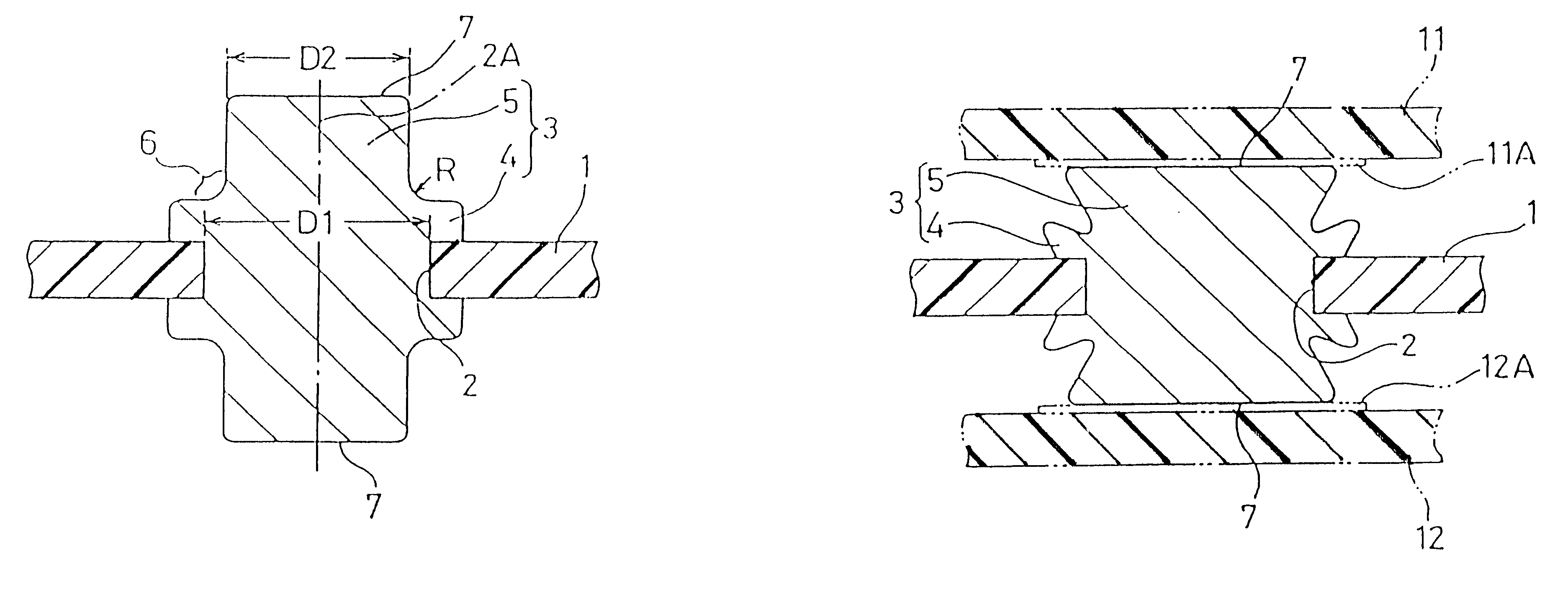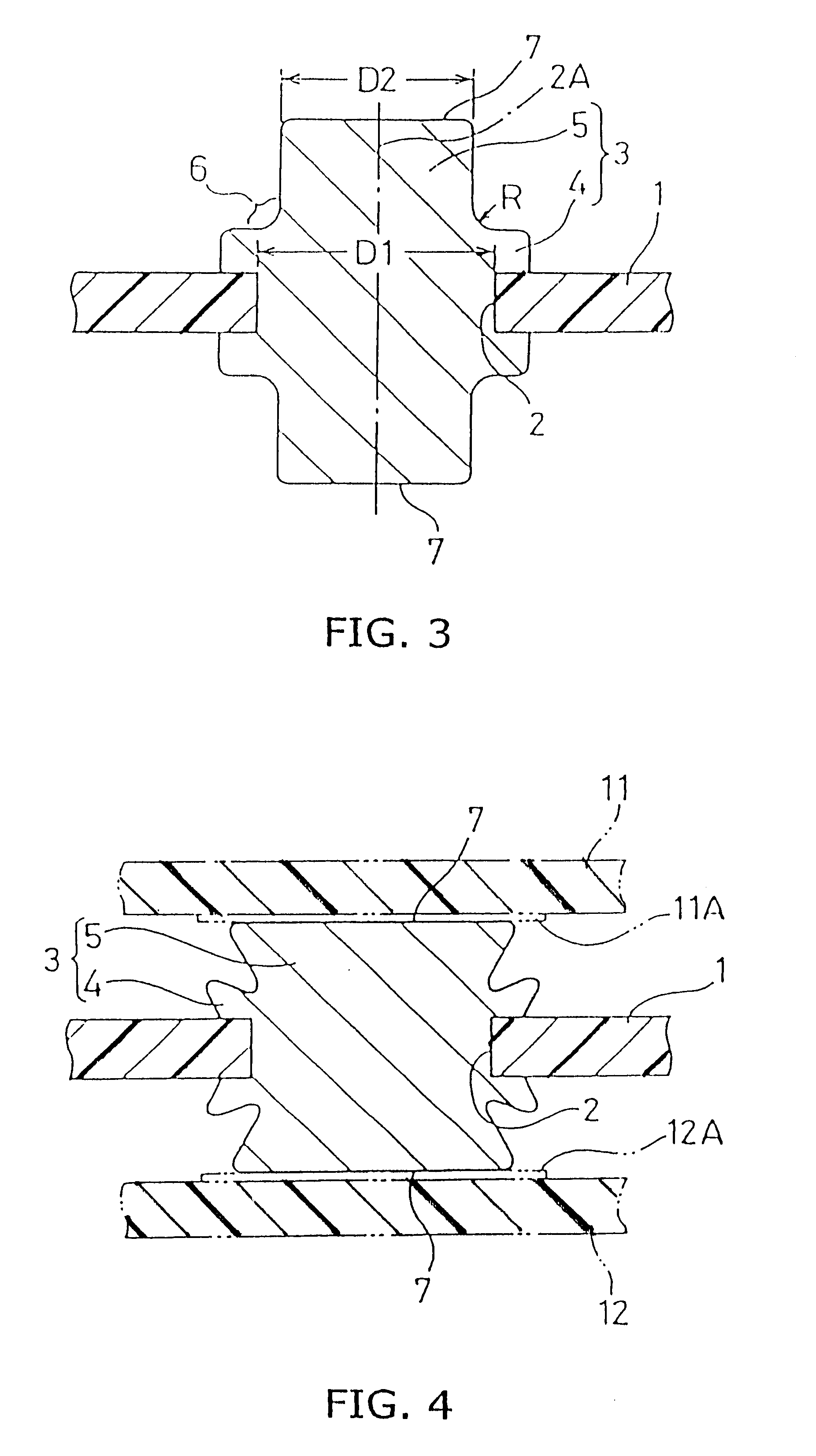Intermediate electrical connector
a technology of electrical connectors and connectors, applied in the direction of connection contact member materials, pulse techniques, coupling device connections, etc., can solve the problems of poor contact poor contact, and insufficient elastic deformation of the conductive member of the electrical connector
- Summary
- Abstract
- Description
- Claims
- Application Information
AI Technical Summary
Benefits of technology
Problems solved by technology
Method used
Image
Examples
Embodiment Construction
Embodiments of the invention will now be described with reference to FIGS. 3-28.
In FIG. 3, a support plate 1 is made of dielectric material. A plurality of support apertures 2 having an inside diameter D1 are provided in the support plate 1, and a plurality of conductive members 3 are attached thereto by integral molding such that each conductive member 3 is held by the circumferential edges of each support aperture 2. Preferred examples of the dielectric material include films of polyimide, polyester, and polyamide.
The conductive member 3 is made by mixing an elastic polymeric material with a conductive powder or particles. Preferred examples of the elastic polymers are silicone rubber, polybutadiene rubber, natural rubber, polyisoprene, styrene-butadiene copolymer rubber, acrylonitrile-butadiene copolymer rubber, ethylene-propylene copolymer rubber, urethane rubber, polyester rubbers, chloroprene rubber, epichlorohydrin rubber, and soft liquid epoxy rubber. Examples of the conduct...
PUM
 Login to View More
Login to View More Abstract
Description
Claims
Application Information
 Login to View More
Login to View More - R&D
- Intellectual Property
- Life Sciences
- Materials
- Tech Scout
- Unparalleled Data Quality
- Higher Quality Content
- 60% Fewer Hallucinations
Browse by: Latest US Patents, China's latest patents, Technical Efficacy Thesaurus, Application Domain, Technology Topic, Popular Technical Reports.
© 2025 PatSnap. All rights reserved.Legal|Privacy policy|Modern Slavery Act Transparency Statement|Sitemap|About US| Contact US: help@patsnap.com



